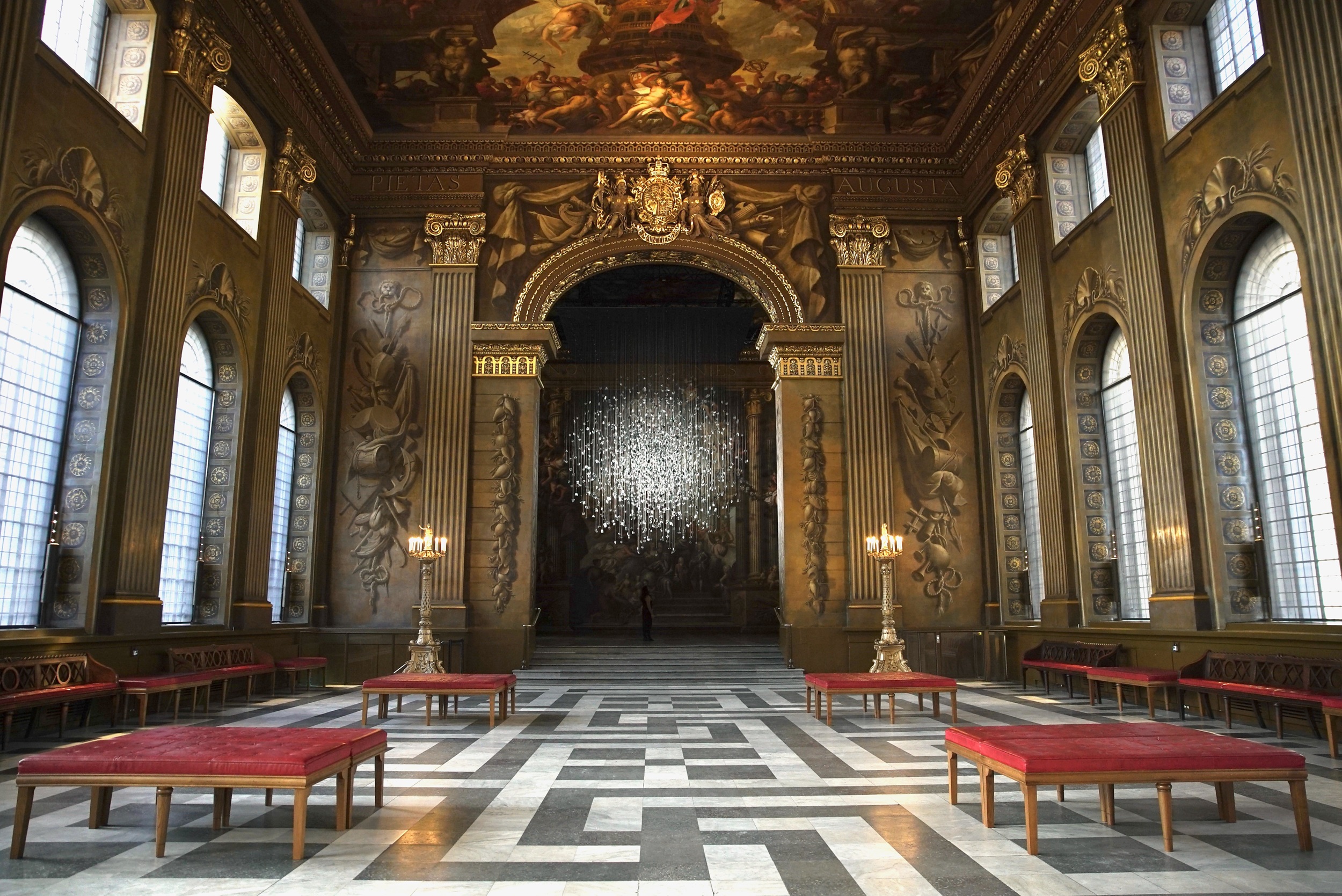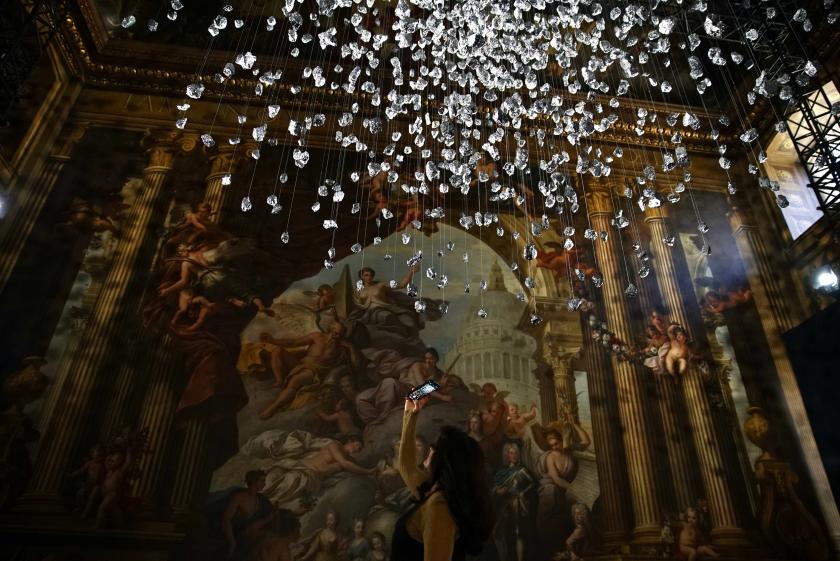"Beautiful outside, unmissable inside" is the is the new tagline for the Old Royal Naval College, Greenwich. If the restoration of James Thornhill’s painted hall wasn’t enough to prompt a journey on the Thames Clipper, Paul Cocksedge’s installation, Coalescence might do the trick. Though contemporary critique is nothing new (think of Flora Yukhnovich’s interpretations of the Rococo style), Cockridge uses the hall as a backdrop for 2,500 pieces of anthracite, a high carbon coal, suspended in front of scenes depicting the Hanoverian dynasty. The resulting orb is remarkably striking and though one can’t help but compare it to a Christmas ornament, the suspended structure has a truly jaw-dropping effect on first glance.
Visitors ascend from the belly of the building to the main hall, via stairs newly familiar from the set of the new Napoleon film. What look like cool, icy stalactites glisten from afar. Lit from four corners of the Upper Hall, the surface of each piece of coal reflects the light, giving the illusion of refraction. Up close, the inky stones reveal their crudeness. On "Social Media Mondays", tickets can be bought that ensure a limited number of visitors. If achieving the perfect selfie is of no interest, at least the artwork can be seen quietly and undisturbed. The blue-white, modern tones of Cocksedge, and the warm, neoclassical motifs of Thornhill are surprisingly complementary. From the bottom right of the West end, the figure of Thornhill raises his right arm, gesturing the completion of his masterpiece to the dynasty. From afar, all is obscured apart from the artist who appears to give his blessing, albeit quizzically, to the glowing orb that has taken its place.
The blue-white, modern tones of Cocksedge, and the warm, neoclassical motifs of Thornhill are surprisingly complementary. From the bottom right of the West end, the figure of Thornhill raises his right arm, gesturing the completion of his masterpiece to the dynasty. From afar, all is obscured apart from the artist who appears to give his blessing, albeit quizzically, to the glowing orb that has taken its place.
The anthracite is sourced from Liverpool’s last coal mine and represents the amount consumed by a single 200W light bulb over a year. Though the installation started at Liverpool Cathedral in March, the piece feels quite at home in Greenwich. The Great Fire of 1666 prompted the introduction of a coal tax which helped fund the creation of the Royal Hospital at Greenwich. As Cocksedge introduced us to the work last week, he stood under a figure pouring a sack of coal into a golden bowl, representing the River Tyne. We must be thankful to this resource two fold. First for its golden era that funded such treasures as the Old Royal Naval College. And secondly, for its demise and transition to sustainable energy, prompting such a striking and incandescent reflection.









![SEX MONEY RACE RELIGION [2016] by Gilbert and George. Installation shot of Gilbert & George 21ST CENTURY PICTURES Hayward Gallery](/sites/default/files/styles/thumbnail_125_x_125_/public/mastimages/Gilbert%20%26%20George_%2021ST%20CENTURY%20PICTURES.%20SEX%20MONEY%20RACE%20RELIGION%20%5B2016%5D.%20Photo_%20Mark%20Blower.%20Courtesy%20of%20the%20Gilbert%20%26%20George%20and%20the%20Hayward%20Gallery._0.jpg?itok=3oW-Y84i)





Add comment